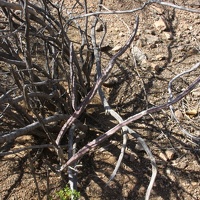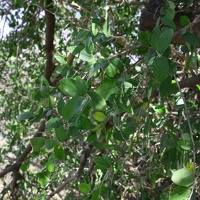Common name: Mesquite
Scientific name: Prosopis spp.
Description: Mesquite is a relatively common tree in the southern Southwest, with a variety of species present as far north as the Verde Valley in Arizona. The tree grows relatively quickly, has catkin-like clusters of leaves, and sweet-smelling bead pods. The pods are either sweet or bitter depending on the variety.
Uses: Mesquite has been an important food source for indigenous peoples. The Tohono O’odham (Papago) are on the verge of commercial success with this crop. Mesquite flour also has major conservation potential, in that it can be made into “bread” without baking. The Pima have traditionally crushed and soaked mesquite pods in water to produce a drink called vau.
Mesquite wood is hard, attractive, and in high demand for quality furniture. Mesquite has recently surpassed hickory as the most popular smoke flavoring for food. Because of the overharvesting, its wood should not be used for this purpose; burning dried pods imparts the same flavor.
Both indigenous peoples and early European/American settlers used the tree's inner bark as material for basketry, coarse fabrics, and medicine to treat a variety of disorders. Gum exuded from the stem is used for manufacture of candy (gumdrops), mucilage for mending pottery, and black dye.
- Author
- Kimberley A. Ryan, Northern Arizona University Anthropology Laboratories
- File
- 223.jpg
- File size
- 948 KB

